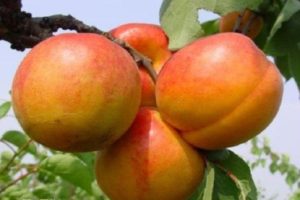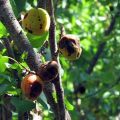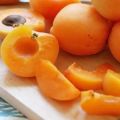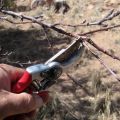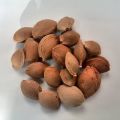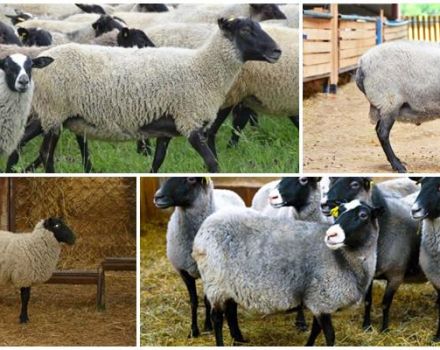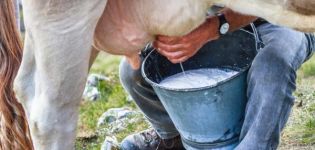Characteristics of the Manchurian apricot variety, description of frost resistance and care of the seedling
Thanks to the Manchurian variety, gardeners and landscape decorators of the plots have the opportunity to create a hedge separating the garden plot from natural reservoirs. The powerful root system of the Manchurian apricot is not only not afraid of a large amount of water, it is able to strengthen the coastline. The winter-hardy variety is a stock for many northern apricot varieties.
Description of the variety
Despite all the advantages of the Manchurian, I would like to start the description of the variety with its decorative qualities. During flowering, the tree looks more like sakura than a traditional apricot, which was the goal of breeders. The crown resembles a white-pink ball, consisting of inflorescences of large white-pink buds (up to 2.5 cm in diameter). During the fruiting period, the color of the tree appears yellow due to the large number of fruits, and in the fall it turns crimson. The reddened leaves (5-12 cm in size) stay on the branches until late autumn.
Inconvenient for the gardener is a tall dark brown tree trunk, reaching 15 meters in height, which is not typical for varietal fruit trees. The trunk of an adult plant is 50 cm in diameter, the bark on it is similar in characteristics to a cork tree, deep cracks are not a disease, but a feature of the species. The endurance and strength of the root system, which extends several meters underground, assumes planting at a distance from buildings.
Apricot Manchurian can live for more than a hundred years, all this time the root system will develop and strengthen, capable of destroying the concrete foundation.
Attention! Apricots do not tolerate being close to currant and raspberry bushes. All other plants cannot grow next to a giant that drains, dehydrates the earth.
Despite these features of the root system, when transplanting, the Manchurian apricot seedling is deepened so that the root collar rises 2-3 cm above the ground.
Fruit:
- oval shape;
- slightly flattened from the sides;
- length 4-5 cm;
- weight 20 g;
- light orange color;
- the skin is velvety.
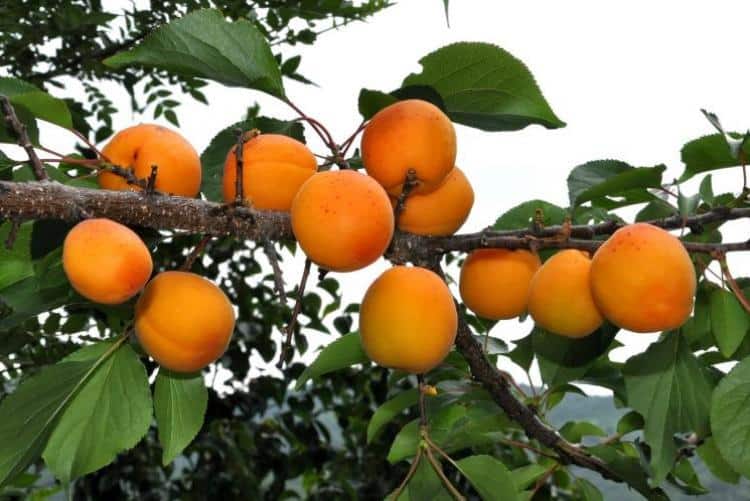
The tree bears fruit abundantly, but the taste of its fruits is called specific. Sweet and sour fruits are perfect for eating raw and for preparing winter preparations - compotes, jams, confitures, preserves.
Breeding history
The work on improving the Manchzhurskiy variety has been going on for a long time in the Chinese branch of the research center of the Russian Federation.The main task of the scientists was to create a decorative apricot with signs of Japanese sakura for central Russia. The goal was achieved, as evidenced by the entry of the plant into the state register in 2005. Fruiting was not a priority.
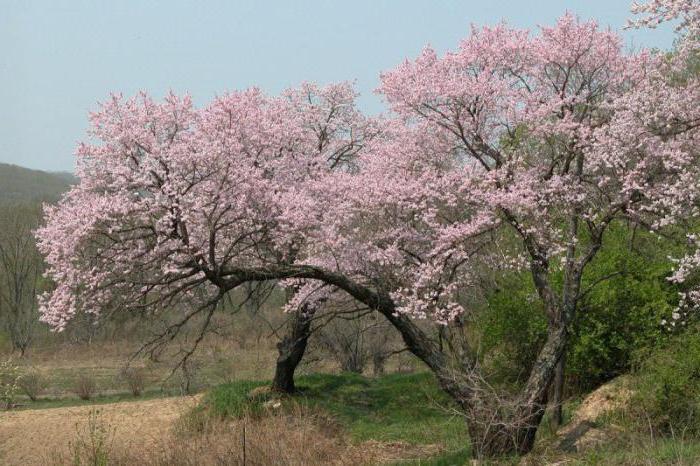
Advantages and disadvantages of the variety
Unpretentiousness, ease of maintenance, high decorative characteristics, a powerful root system are the indisputable advantages of the variety. As a rootstock, Manchurian apricot is used to improve the quality of other varieties of winter-hardy apricots. The disadvantages can be considered the height of the tree, which complicates the harvest and pruning of the crown. Bitter taste reduces the tasting characteristics of the fruit.
Specifications
The characteristics of the Manchurian variety, which served as a stock for Ivan Vladimirovich Michurin for his experiments, differ significantly from those of the plant of the same name, adapted for regions of temperate climates.
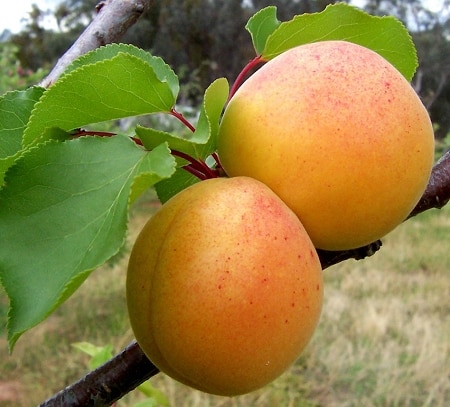
Drought resistance, winter hardiness
Due to the peculiarities of the bark, the Manchurian apricot easily tolerates frosts down to -30 ° C. An adult plant is more resistant to drought than a young one. Every year the roots go deeper into the soil, where they are able to independently extract the moisture needed for a large plant. Young trees during a dry season must be systematically watered.
Pollination, flowering period and ripening times
Violent flowering continues for 12 days. In some regions, it starts in early April. In the more northern ones, this moment comes after the snow melts. Flowers attract bees and wasps with their honey aroma. They are the pollinators of the Manchurian apricot.

Productivity, fruiting
Already at the beginning of June, an apricot tree of this variety pleases gardeners with mature, but medium-sized fruits. The number of fruits is directly proportional to the size of the crown, the branches of which are strewn. Despite the fact that the fruit is not large, the harvest from an adult tree can be generously shared with neighbors.
A gardener from the Moscow region shared his achievement by removing 25 10-liter buckets of apricots from one adult tree. Seedlings begin to bear fruit in the 5th year after planting on the site.
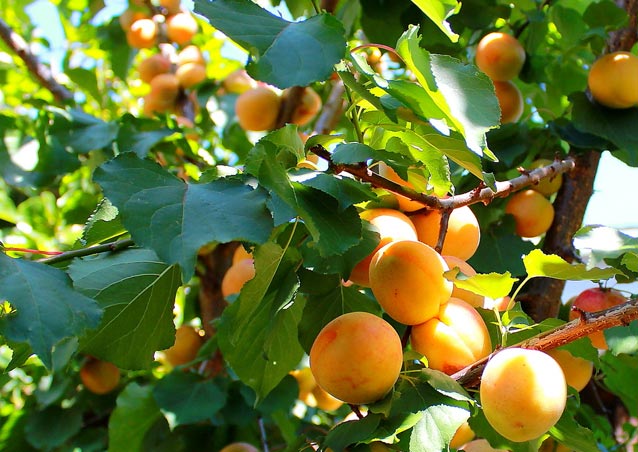
Disease and pest resistance
The immunity to viral, fungal infections in the winter-hardy variety of apricots is quite high. Its main enemies are insects, the fight against them does not require much effort, but the sprayer should always be at hand:
- The spider mite is afraid of insecticides - "Regent", "Taboo".
- Cherry elephant do not like the solution of potassium permanganate.
- Copper-containing preparations are used against aphids.
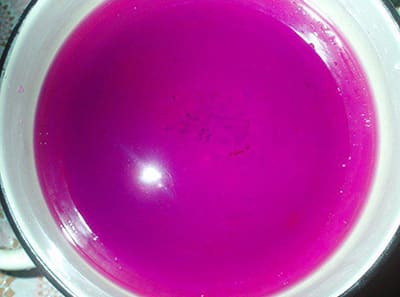
Verticellosis is terrible for all apricot trees, a soap solution helps against it, spotting is treated with Hom.
Features of planting and care
Growing Manchurian apricots requires fertile soil, but it doesn't matter if the source of nutrition is silt, sandy loam or rocky soil. Planting for plants of this species is preferable in the spring, then the seedling grown in greenhouse conditions or in another region will have time to adapt to the climatic conditions of the region.
Standard Annual Care:
- With a prolonged absence of rain in the summer, the tree must be watered abundantly with water warmed in the sun.
- Mulch - mown grass, straw, hay will help to retain moisture in the soil at the roots.
- Root feeding is done twice a year.
- Loosening the soil within a radius of 2-2.5 meters from the trunk.
- In spring and autumn, branches with damage, old and fast-growing, are removed, taking away the strength from the plant for fruiting.
- Places of cuts are processed with garden varnish.
- Trunk whitewashing is also carried out in autumn and spring.
Attention! When planting seedlings near water, it is necessary to create a drainage layer of 20 cm from rubble.
Every gardener carries out the same care measures with apple, pear, cherry, plum and other fruit trees. It may seem difficult only to a novice gardener. Over time, this becomes natural and inevitable. Compliance with the processing time from pests, fungi, infectious diseases is the key to the health of the tree and a high yield.

